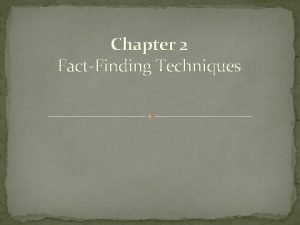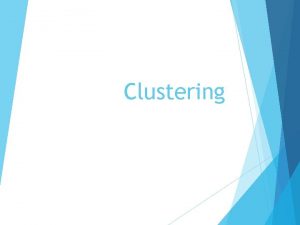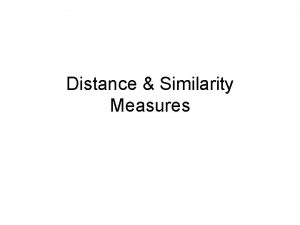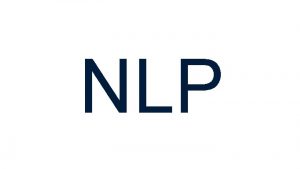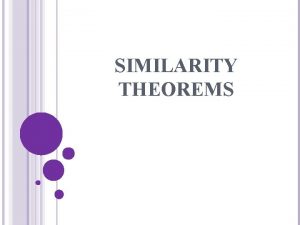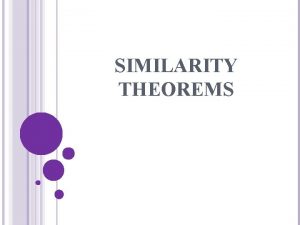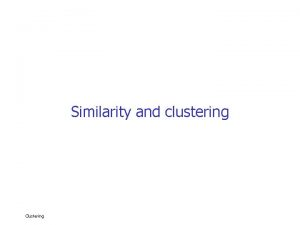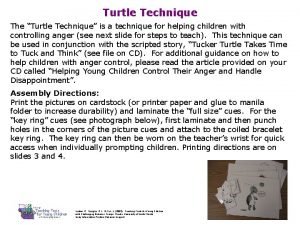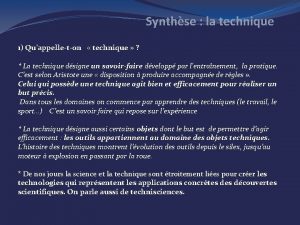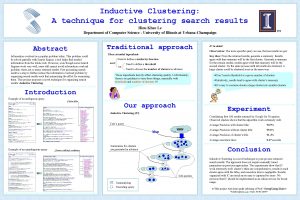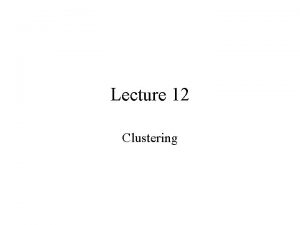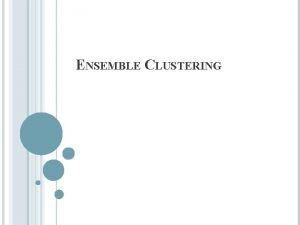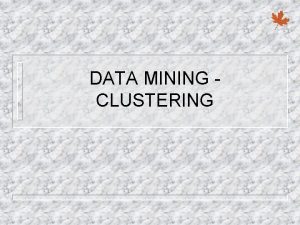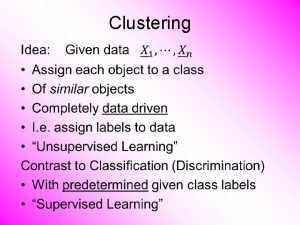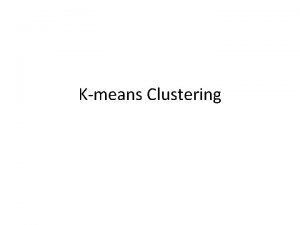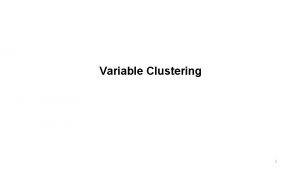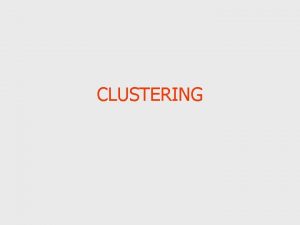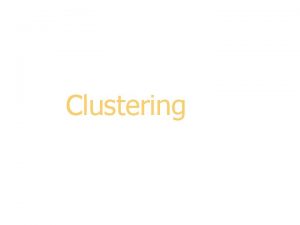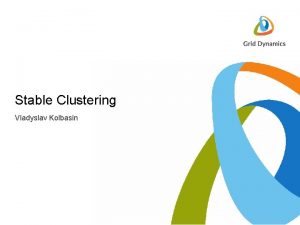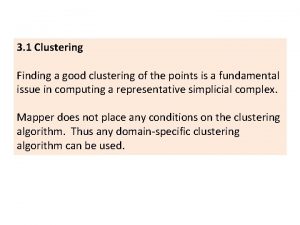Clustering Clustering is a technique for finding similarity




























- Slides: 28

Clustering

Clustering is a technique for finding similarity groups in data, called clusters, i. e. , it groups data instances that are similar to (near) each other in one cluster and data instances that are very different (far away) from each other into different clusters. Clustering is often called an unsupervised learning task as no class values denoting an a priori grouping of the data instances are given, which is the case in supervised learning. Due to historical reasons, clustering is often considered synonymous with unsupervised learning. In fact, association rule mining is also unsupervised This chapter focuses on clustering. 2

An illustration The data set has four natural groups of data points, i. e. , 4 natural clusters. 3

What is clustering for? Let us see some real-life examples Example 1: groups people of similar sizes together to make “small”, “medium” and “large” T-Shirts. Tailor-made for each person: too expensive One-size-fits-all: does not fit all. Example 2: In marketing, segment customers according to their similarities To do targeted marketing. Example 3: Cluster different malware instances according to their similarities To classify them into categories such as trojans, viruses, worms To determine if they originated from the same source 4

What is clustering for? (cont…) Example 4: Given a collection of text documents, we want to organize them according to their content similarities, To produce a topic hierarchy In fact, clustering is one of the most utilized data mining techniques. It has a long history, and used in almost every field, e. g. , medicine, psychology, botany, sociology, biology, archeology, marketing, insurance, libraries, security, etc. In recent years, due to the rapid increase of online documents, text clustering has become important. 5

Aspects of clustering A clustering algorithm Partitional clustering Hierarchical clustering … A distance (similarity, or dissimilarity) function Clustering quality Inter-clusters distance maximized Intra-clusters distance minimized The quality of a clustering result depends on the algorithm, the distance function, and the application. 6

Partitioning Algorithms: Basic Concept Partitioning method: Partitioning a database D of n objects into a set of k clusters, such that the sum of squared distances is minimized (where ci is the centroid or medoid of cluster Ci) Given k, find a partition of k clusters that optimizes the chosen partitioning criterion Global optimal: exhaustively enumerate all partitions Heuristic methods: k-means and k-medoids algorithms k-means (Mac. Queen’ 67, Lloyd’ 57/’ 82): Each cluster is represented by the center of the cluster k-medoids or PAM (Partition around medoids) (Kaufman & Rousseeuw’ 87): Each cluster is represented by one of the objects in 7 the cluster

The K-Means Clustering Method Given k, the k-means algorithm is implemented in four steps: Partition objects into k nonempty subsets Compute seed points as the centroids of the clusters of the current partitioning (the centroid is the center, i. e. , mean point, of the cluster) Assign each object to the cluster with the nearest seed point Go back to Step 2, stop when the assignment does not change 8

An Example of K-Means Clustering K=2 Arbitrarily partition objects into k groups The initial data set n n Loop if needed Reassign objects Partition objects into k nonempty subsets Repeat n n n Update the cluster centroids Compute centroid (i. e. , mean point) for each partition Assign each object to the cluster of its nearest centroid Until no change Update the cluster centroids 9

Comments on the K-Means Method Strength: Efficient: O(tkn), where n is # objects, k is # clusters, and t is # iterations. Normally, k, t << n. Comparing: PAM: O(k(n-k)2 ), CLARA: O(ks 2 + k(n-k)) Comment: Often terminates at a local optimal Weakness Applicable only to objects in a continuous n-dimensional space Using In the k-modes method for categorical data comparison, k-medoids can be applied to a wide range of data Need to specify k, the number of clusters, in advance (there are ways to automatically determine the best k (see Hastie et al. , 2009) Sensitive to noisy data and outliers 10 Not suitable to discover clusters with non-convex shapes

Variations of the K-Means Method Most of the variants of the k-means which differ in Selection of the initial k means Dissimilarity calculations Strategies to calculate cluster means Handling categorical data: k-modes Replacing means of clusters with modes Using new dissimilarity measures to deal with categorical objects Using a frequency-based method to update modes of clusters A mixture of categorical and numerical data: k-prototype method 11

What Is the Problem of the K-Means Method? The k-means algorithm is sensitive to outliers ! Since an object with an extremely large value may substantially distort the distribution of the data K-Medoids: Instead of taking the mean value of the object in a cluster as a reference point, medoids can be used, which is the most centrally located object in a cluster 10 10 9 9 8 8 7 7 6 6 5 5 4 4 3 3 2 2 1 1 0 12 0 0 1 2 3 4 5 6 7 8 9 10

PAM: A Typical K-Medoids Algorithm Total Cost = 20 10 9 8 Arbitrary choose k object as initial medoids 7 6 5 4 3 2 Assign each remainin g object to nearest medoids 1 0 0 1 2 3 4 5 6 7 8 9 10 K=2 Randomly select a nonmedoid object, Orandom Total Cost = 26 Do loop Until no change 10 10 9 Swapping O and Orandom If quality is improved. Compute total cost of swapping 8 7 6 9 8 7 6 5 5 4 4 3 3 2 2 1 1 0 0 0 1 2 3 4 5 6 7 8 9 10 13

The K-Medoid Clustering Method K-Medoids Clustering: Find representative objects (medoids) in clusters PAM (Partitioning Around Medoids, Kaufmann & Rousseeuw 1987) Starts from an initial set of medoids and iteratively replaces one of the medoids by one of the non-medoids if it improves the total distance of the resulting clustering PAM works effectively for small data sets, but does not scale well for large data sets (due to the computational complexity) Efficiency improvement on PAM CLARA (Kaufmann & Rousseeuw, 1990): PAM on samples CLARANS (Ng & Han, 1994): Randomized re-sampling 14

Hierarchical Clustering Use distance matrix as clustering criteria. This method does not require the number of clusters k as an input, but needs a termination condition Step 0 a Step 1 Step 2 Step 3 Step 4 ab b abcde c cde d de e Step 4 agglomerative (AGNES) Step 3 Step 2 Step 1 Step 0 divisive (DIANA) 15

AGNES (Agglomerative Nesting) Introduced in Kaufmann and Rousseeuw (1990) Implemented in statistical packages, e. g. , Splus Use the single-link method and the dissimilarity matrix Merge nodes that have the least dissimilarity Go on in a non-descending fashion Eventually all nodes belong to the same cluster 16

Distance between Clusters X X Single link: smallest distance between an element in one cluster and an element in the other, i. e. , dist(Ki, Kj) = min(tip, tjq) Complete link: largest distance between an element in one cluster and an element in the other, i. e. , dist(Ki, Kj) = max(tip, tjq) Average: avg distance between an element in one cluster and an element in the other, i. e. , dist(Ki, Kj) = avg(tip, tjq) Centroid: distance between the centroids of two clusters, i. e. , dist(Ki, Kj) = dist(Ci, Cj) Medoid: distance between the medoids of two clusters, i. e. , dist(Ki, Kj) = dist(Mi, Mj) Medoid: a chosen, centrally located object in the cluster 17

Centroid, Radius and Diameter of a Cluster (for numerical data sets) Centroid: the “middle” of a cluster Radius: square root of average distance from any point X of the cluster to its centroid Diameter: square root of average mean squared distance between all pairs of points in the cluster 18

Extensions to Hierarchical Clustering Major weakness of agglomerative clustering methods Can Do never undo what was done previously not scale well: time complexity of at least O(n 2), where n is the number of total objects Integration of hierarchical & distance-based clustering BIRCH (1996): uses CF-tree and incrementally adjusts the quality of sub-clusters (CF = Clustering Feature) CHAMELEON (1999): hierarchical clustering using dynamic modeling 19

BIRCH (Balanced Iterative Reducing and Clustering Using Hierarchies) Zhang, Ramakrishnan & Livny, SIGMOD’ 96 Incrementally construct a CF (Clustering Feature) tree, a hierarchical data structure for multiphase clustering Phase 1: scan DB to build an initial in-memory CF tree (a multi-level compression of the data that tries to preserve the inherent clustering structure of the data) Phase 2: use an arbitrary clustering algorithm to cluster the leaf nodes of the CF-tree Scales linearly: finds a good clustering with a single scan and improves the quality with a few additional scans Weakness: handles only numeric data, and sensitive to the order of the data record 20

Clustering Feature Vector in BIRCH Clustering Feature (CF): CF = (N, LS, SS) N: Number of data points LS: linear sum of N points: SS: square sum of N points CF = (5, (16, 30), (54, 190)) (3, 4) (2, 6) (4, 5) (4, 7) (3, 8) 21

The CF Tree Structure Root B=7 CF 1 CF 2 CF 3 CF 6 L=6 child 1 child 2 child 3 child 6 Non-leaf node CF 1 CF 2 CF 3 CF 5 child 1 child 2 child 3 child 5 Leaf node prev CF 1 CF 2 CF 6 Leaf node next prev CF 1 CF 2 CF 4 22 next

The Birch Algorithm Cluster Diameter For each point in the input Find closest leaf entry Add point to leaf entry and update CF If entry diameter > max_diameter, then split leaf, and possibly parents Algorithm is O(n) Concerns Sensitive to insertion order of data points Since we fix the size of leaf nodes, so clusters may not be so natural Clusters tend to be spherical given the radius and diameter measures 23

Cluster Evaluation 24

Measuring Clustering Quality 3 kinds of measures: External, internal and relative External: supervised, employ criteria not inherent to the dataset Compare a clustering against prior or expert-specified knowledge (i. e. , the ground truth) using certain clustering quality measure Internal: unsupervised, criteria derived from data itself Evaluate the goodness of a clustering by considering how well the clusters are separated, and how compact the clusters are, e. g. , Silhouette coefficient Relative: directly compare different clusterings, usually those obtained via different parameter settings for the same algorithm 25

Measuring Clustering Quality: External Methods Clustering quality measure: Q(C, T), for a clustering C given the ground truth T Q is good if it satisfies the following 4 essential criteria Cluster homogeneity: the purer, the better Cluster completeness: should assign objects belong to the same category in the ground truth to the same cluster Rag bag: putting a heterogeneous object into a pure cluster should be penalized more than putting it into a rag bag (i. e. , “miscellaneous” or “other” category) Small cluster preservation: splitting a small category into pieces is more harmful than splitting a large category into pieces 26

Some Commonly Used External Measures Matching-based measures Purity, maximum matching, F-measure Entropy-Based Measures Ground truth partitioning T Conditional entropy, normalized mutual Cluster C information (NMI), variation of information Pair-wise measures Four possibilities: True positive (TP), FN, FP, TN Jaccard coefficient, Rand statistic, Fowlkes. Mallow measure Correlation measures Discretized Huber static, normalized discretized Huber static 1 1 T 2 2 27

Reference http: //www. cs. uic. edu/~liub/teach/cs 583 -fall 05/CS 583 -unsupervised-learning. ppt https: //wiki. engr. illinois. edu/display/cs 412/
 Flat and hierarchical clustering
Flat and hierarchical clustering Partitional clustering vs hierarchical clustering
Partitional clustering vs hierarchical clustering Rumus euclidean
Rumus euclidean Fact finding methods in system development
Fact finding methods in system development Fact finding techniques
Fact finding techniques Egg för emanuel
Egg för emanuel Tack för att ni har lyssnat
Tack för att ni har lyssnat Förklara densitet för barn
Förklara densitet för barn Rutin för avvikelsehantering
Rutin för avvikelsehantering Vad är vanlig celldelning
Vad är vanlig celldelning Nationell inriktning för artificiell intelligens
Nationell inriktning för artificiell intelligens Myndigheten för delaktighet
Myndigheten för delaktighet Presentera för publik crossboss
Presentera för publik crossboss Var 1721 för stormaktssverige
Var 1721 för stormaktssverige Debattartikel mall
Debattartikel mall Tobinskatten för och nackdelar
Tobinskatten för och nackdelar Referatmarkeringar
Referatmarkeringar Brunn karttecken
Brunn karttecken Epiteltyper
Epiteltyper Särskild löneskatt för pensionskostnader
Särskild löneskatt för pensionskostnader Programskede byggprocessen
Programskede byggprocessen Rbk mätning
Rbk mätning Vätsketryck formel
Vätsketryck formel Avrunda decimaltal
Avrunda decimaltal Elektronik för barn
Elektronik för barn Borra hål för knoppar
Borra hål för knoppar Tack för att ni har lyssnat
Tack för att ni har lyssnat Smärtskolan kunskap för livet
Smärtskolan kunskap för livet Bris för vuxna
Bris för vuxna




